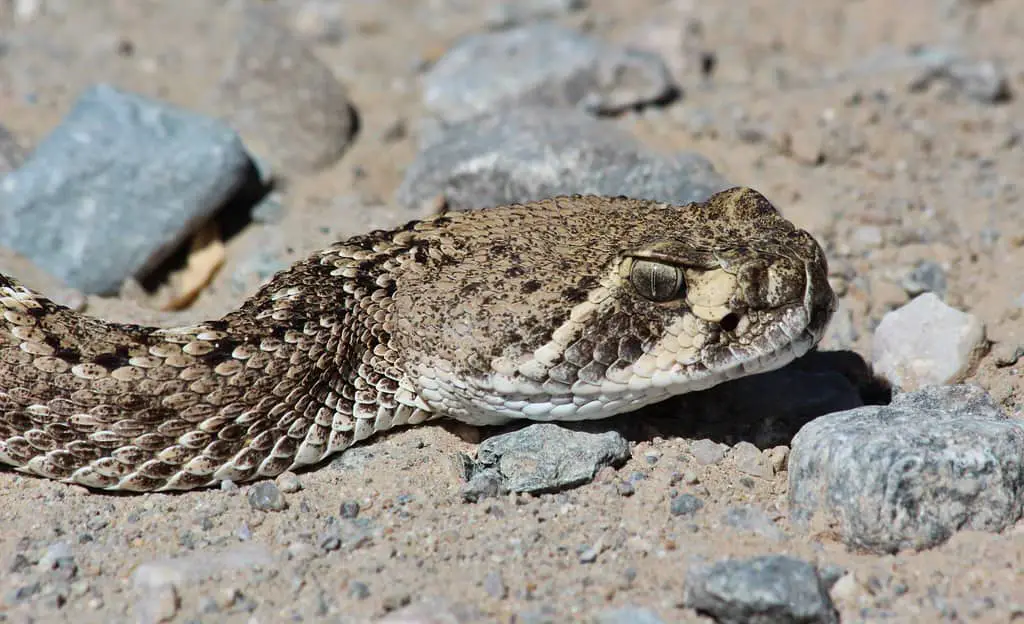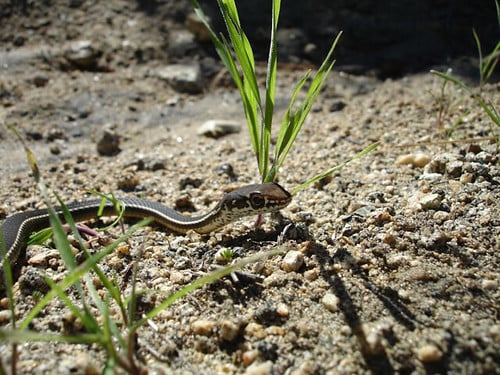Whether you are a California resident or visiting the state, you will find many different snakes you can encounter. Some snakes you may encounter are the Chaparral Whipsnake, the Sharp-tailed snake, the Gopher snake, the Northern Garter snake, and the Western Diamondback Rattlesnake.
Western Diamondback Rattlesnake
The Western Diamondback Rattlesnake is the largest among the twenty-odd species of Southwestern desert rattlers. It can reach seven feet long. It is native to the southwestern United States, Mexico, and central Texas.
The Western Diamondback Rattlesnake’s venom is highly potent and affects its victim’s heart and muscle systems. This makes it a dangerous snake for humans to come in contact with.
The Western Diamondback Rattlesnake can live in various habitats, from dry, rocky hillsides to coastal grass plains. Its venom is used to subdue its prey, usually small mammals. Its venom is also used for medicinal preparations.
The Western Diamondback Rattlesnake has a dark, diamond-shaped pattern on its back, with two dark diagonal lines on each side. Its tail is black and white banded. The black and white bands are 1:1 ratio.
Terrestrial Garter Snake
Depending on the subspecies, the coloration of the Terrestrial Garter Snake of California can vary from olive brown to brownish-black. These snakes can also have stripes on the sides of their body, with a central stripe that can be red or yellow. The ground color between the stripes can be dull or bright red.
The Northwestern Gartersnake is a species that prefers to live in damp, open areas in the northern part of California. It feeds on snails and slugs, as well as earthworms. The species may also prey on fish and small amphibians. The snake may be found near houses or in open areas where lots of vegetation can be found.
Chaparral Whipsnake
During the spring mating season, whip snakes in California use native grassland as a breeding site. In addition to providing essential feeding sites, native grassland helps facilitate movement between chaparral and scrub habitats. In addition, female whip snakes remain close to the hibernaculum during mating.
During the winter, whipsnake is relegated to short above-ground movements. A whipsnake’s ability to move between different habitat types helps ensure that gene flow occurs between subpopulations. Moreover, maintaining area within corridors ensures long-term connectivity between whipsnake populations.
The Alameda whipsnake’s range has been severely fragmented by urban development. The whipsnake’s range is also subject to wildfire hazards. Loss of private lands would significantly reduce the breeding habitat for the whipsnake. In addition, the whipsnake’s range continues to be fragmented by roadway construction.
Gopher snake
The gopher rockfish is a protected species typically found in 30-240 feet of water. The Department of Fish and Game has a quota system to protect the species. A limited amount of gopher rockfish is taken by recreational anglers. They are caught by hand or using tongs.
The gopher rockfish has a thick, broad mouth. Wetting your hands and applying a light slime coating is the best way to harvest these fish. If you catch a rockfish you cannot keep, it’s best to release the animal immediately.
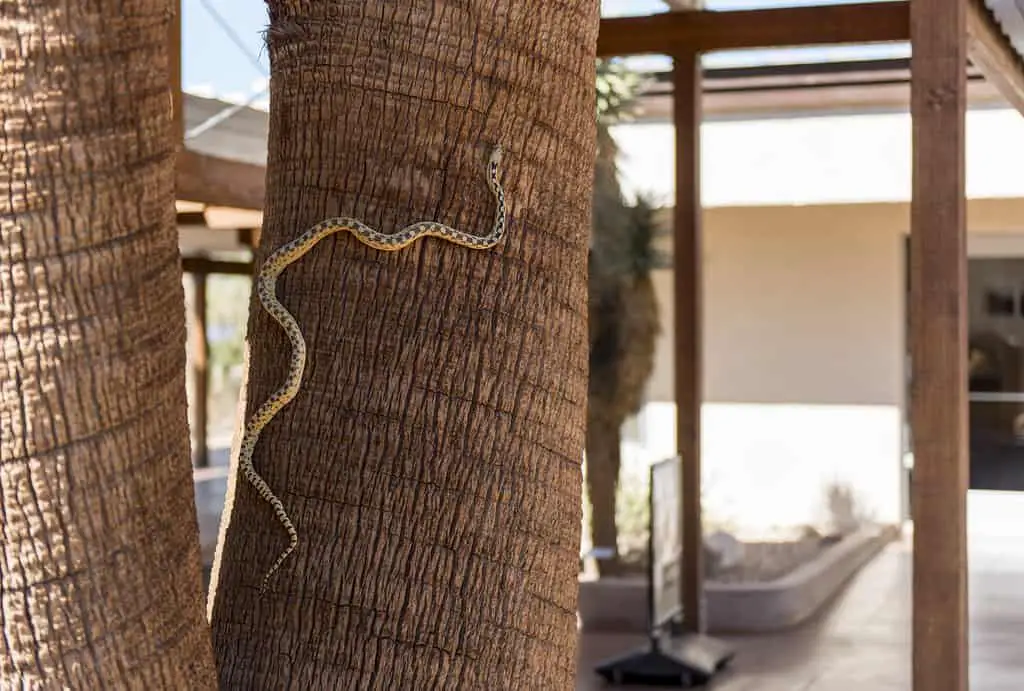
The largest gopher rockfish weighs in at a respectable 4 pounds. This fish is protected in California and can be caught year-round. However, the Department of Fish and Game sets limits to protect the species from overfishing.
Sharp-tailed snake
Despite their small size, sharp-tailed snakes can be found in many habitats, including forests, meadows, wetlands, grasslands, rocky outcrops, and even urban areas. Sharp-tailed snakes are non-venomous and do not harm humans. They are primarily found in moist, forested areas with low elevations. They live in association with other snakes and amphibians.
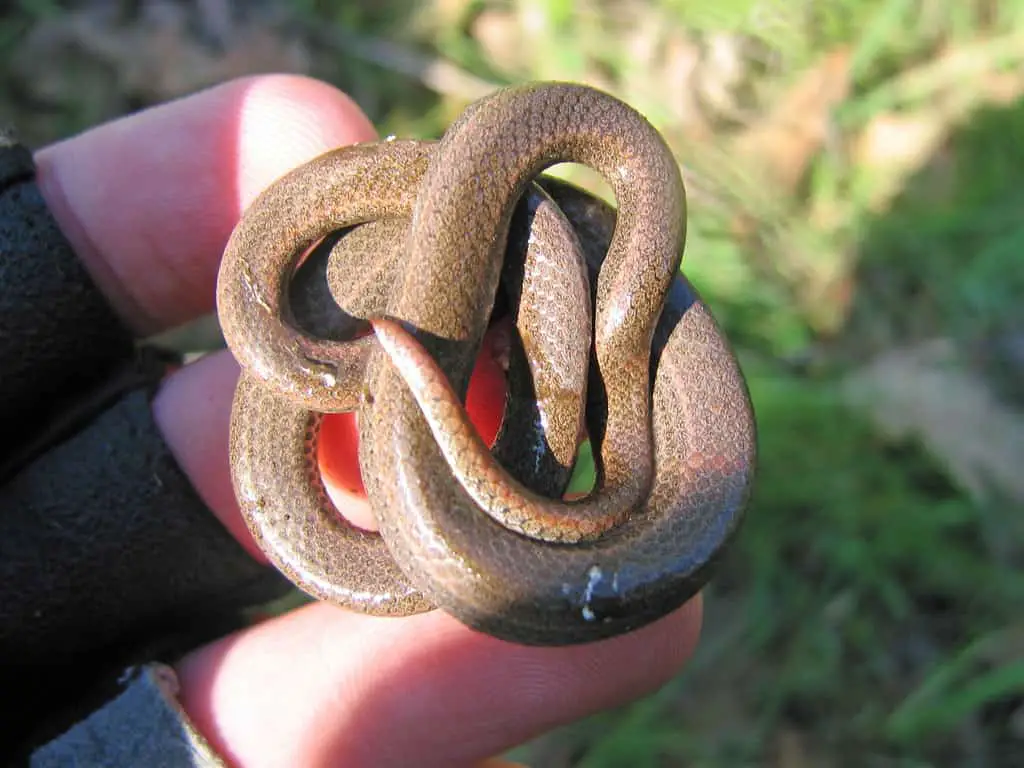
Sharp-tailed snakes are known for a variety of habitats in California. Often, sharp-tailed snakes reside in riparian deciduous woodlands. They may also occur in annual grasslands. Sharp-tailed snakes may feed on slugs, salamanders, and other small animals in these areas.
Sharp-tailed snakes also commonly live under rocks, logs, and other cover objects. The snake may stay in the same cover object for an extended period, moving only short distances.
Northern Garter Snake
Unlike most garter snake species, the northern garter snake in California is primarily terrestrial. This species is found in the northern part of the state and prefers sunny, open areas. They may be spotted near houses and feed on earthworms and small fish. It can be seen in moist areas and escape into dense vegetation when disturbed.
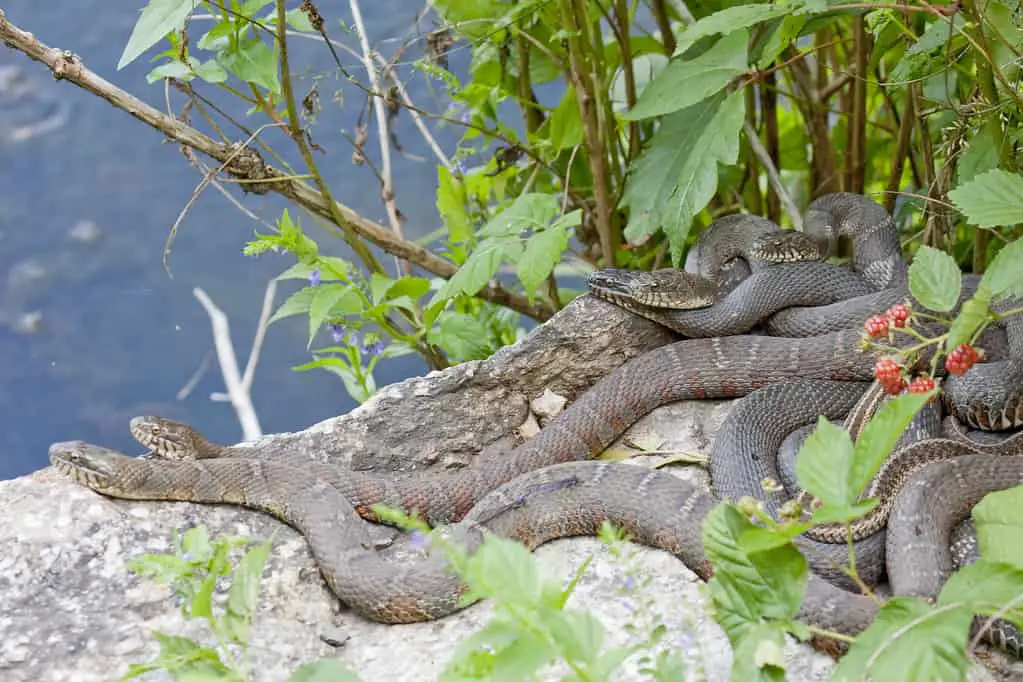
The northern garter snake in California is considered threatened under the federal Endangered Species Act. The species is primarily threatened by habitat loss. It has declined in abundance in some areas because of habitat loss and is often found near houses and other human-made structures.

